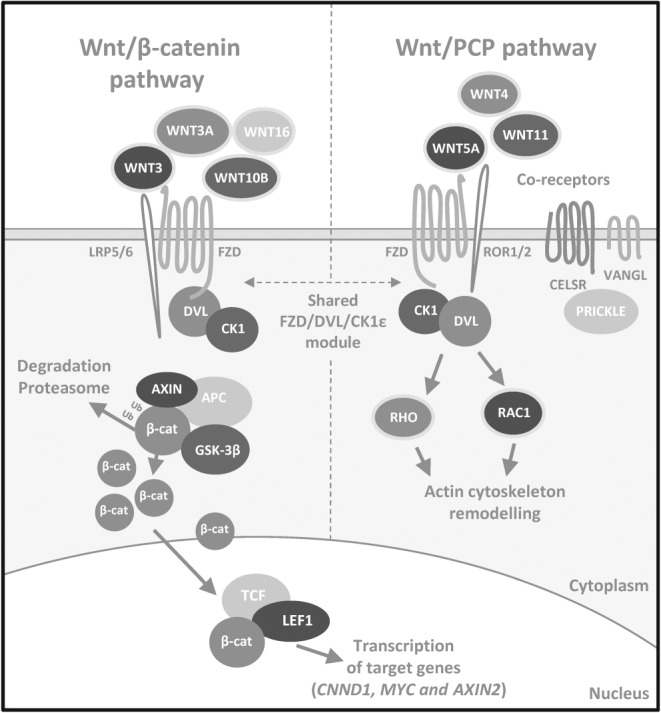Figure 1.

Simplified overview of mammalian Wnt/β‐catenin and Wnt/PCP pathways. The Wnt/β‐catenin signalling pathway (on the left) is activated upon binding of Wnt proteins (typical ligands Wnt‐3, Wnt‐3a, Wnt‐10b and Wnt‐16 are indicated) to dedicated receptors and co‐receptors FZD and LRP5/6. This leads to activation of cytoplasmic effector proteins from the DVL family that are phosphorylated by CK1ε, destabilizing the AXIN/GSK‐3β/APC destruction complex, normally responsible for β‐catenin degradation by proteasome. Cytoplasmic β‐catenin accumulates and transports to the nucleus, where it binds TCF/LEF transcription factors and activates transcription of target genes (such as CCND1, MYC or AXIN2). The Wnt/PCP pathway (on the right) is activated by a different set of ligands – typically Wnt‐4, Wnt‐5a, Wnt‐5b and Wnt‐11. The Wnt/PCP pathway shares a module composed of FZD, DVL and CK1ε with the Wnt/β‐catenin pathway but also contains numerous other transmembrane proteins – ROR1/2, VANGL1/2 and CELSR1–3 (and others not shown on this scheme) and cytoplasmic effectors from the PRICKLE family dedicated to the Wnt/PCP pathway only. This receptor complex conveys the signal downstream via a poorly known mechanism involving small G proteins Rho and/or Rac1 and their effectors that remodel the actin cytoskeleton.
